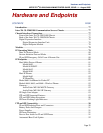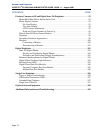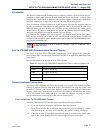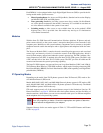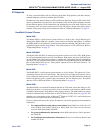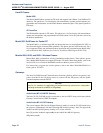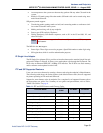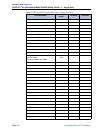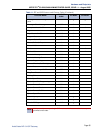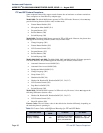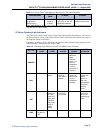
Hardware and Endpoints
INTER-TEL
®
CS-5200/5400 ADMINISTRATOR GUIDE, ISSUE 1.1 – August 2005
Page 80 Inter-Tel Protocol Mode
Inter-Tel Protocol Mode
When multi-protocol phones operate in ITP mode, they function like Inter-Tel digital phones.
They connect to Inter-Tel advanced communications platforms by way of an IP stream to the
IP Resource application running an Inter-Tel proprietary protocol. This is the same protocol
that the Model 8660 uses, which is a modified version of the protocol that the Model 8500
series digital phones use. The main difference is that the multi-protocol phones connect to the
system via IP.
The advantage of ITP mode over SIP mode is that ITP mode allows you to use the features and
functionality that the system provides for a digital phone. The disadvantage of ITP mode over
SIP mode is that when the phone is in ITP mode, it cannot connect to another vendor’s switch.
Multi-protocol phones are configured to use ITP by default.
To support multi-protocol phones in ITP mode, a Call Processing software license is required.
Session Initiation Protocol Mode
When the multi-protocol phones are in SIP mode, the phones use SIP to connect to the Inter-
Tel SIP Server (v1.1 or later). The advantage of running in SIP mode on an Inter-Tel advanced
communications platform is the use of the Shared Extension feature. A shared extension allows
up to five SIP phones to use the same extension number on the same system. Incoming calls to
a shared extension are sent to SIP phones simultaneously.
Once one of the endpoints answers the call, the SIP Server cancels the call to all other end-
points. This provides you with mobility so that you do not miss any calls when you are away
from your main desk. Another advantage of SIP mode is that the endpoint can run on another
vendor’s switch that supports SIP. The disadvantage of SIP mode on an Inter-Tel advanced
communications platform is the reduced feature set.
IP and SIP Emergency Calls From A Remote Site
To locate and quickly respond to a caller needing help, emergency response services depend on
accurate information from Caller ID or, in Europe, Calling Line ID (CLID) features. Because
of this reliance on Caller ID and CLID data, emergency responders can be misdirected or
delayed if the Caller ID or CLID information provided to a dispatcher is incorrect.
To help ensure that emergency services can respond quickly to IP or SIP endpoint calls from
remote sites, the remote site must be equipped with a correctly configured MGCP or SIP gate-
way. If an Emergency Call is dialed from a remote site equipped with a correctly configured
gateway, responders can be dispatched to the site of the emergency. However, if the remote site
is not equipped with a correctly configured gateway, the call will be identified, instead, as
coming from the location where the system chassis is located.
Also, if uninterruptible power supply (UPS) protection is not installed with the Inter-Tel 5000
system, IP and SIP endpoints will not operate if the power fails either at remote sites or at the
main system location. All IP and SIP endpoint users should be alerted to these potentially haz-
ardous situations.
NOTICE
Emergency Call phone numbers include:
• 911, the default for US systems.
• 999, the default for UK systems.
• If applicable, 112, an emergency number used widely in Europe outside of the UK.
• Any emergency dial number sequence that is appropriate for the location. Ask your
Inter-Tel dealer or certified technician for details.






